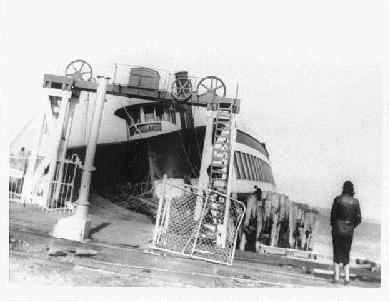On September 20th, 2018, the eve of the Hurricane of 1938’s 80th anniversary, a sizeable group of Jamestowners gathered at the library to hear fellow townsfolk read family letters that had been written just after the storm. No video, no flashy lighting, no History Channel drama—just regular folks, standing up to read what their equally regular forebears had written. It could’ve been boring, but thanks to excellent planning and preparation it was memorable instead; a great reminder of the impact of well-rehearsed personal stories.
It was the detail in each letter that really brought the storm to life for those of us too young to have lived through it ourselves. Trees stripped bare, land browner than winter; goldenrod and birds, all gone. A sailboat’s crew saved only by their captain’s nose for bad weather and their own resourcefulness.
Working up my contribution to the evening, I had wondered whether our 21st century attention spans could handle such a quiet format. The answer was an emphatic ‘yes,’ but only because the evening was so well thought out. Organizer Sue Maden helped readers edit out anything beyond the storm’s impact on the island and its residents. The order or readings managed to knit together a chronology from unrelated family details. And each speaker was limited to a maximum of ten minutes. What I worried might be a restless crowd sat rapt, right to the bitter end. (I know, because I was the very last speaker.)
The next day, September 21, 2018, dawned sunny and clear, with a fast-building breeze—not terribly different from the morning the ’38 hurricane hit. As we headed out of the Bay to sail forty miles to Woods Hole, I was glad we didn’t have to rely solely on our noses to know there were no hurricanes brewing.
With so many glitzy presentation tools available now, it’s easy to forget how appealing a basic evening of shared personal memories can be. Give an audience a well-edited, carefully planned story, and you’ll keep ‘em hooked—right to the last word.